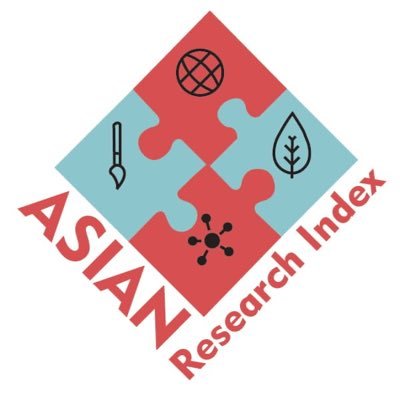Musculoskeletal Pain and Exercise Habits in Pregnant Women at Timergara Teaching Hospital, Dir Lower
DOI:
https://doi.org/10.55735/qrvwmt63Keywords:
Exercise habits , Musculoskeletal pain , Pain management , Pregnancy , TrimesterAbstract
Background: Musculoskeletal pain is a common issue during pregnancy, often affecting the lower back, pelvis, and limbs, with severity varying across trimesters. While exercise is commonly suggested for prevention and relief, its true effectiveness remains uncertain. Objective: To assess the relationship between exercise habits and the nature of musculoskeletal pain experienced by pregnant women during the three trimesters. Methodology: This cross-sectional study was conducted using data collected from 900 pregnant women who completed surveys about their demographics, exercise habits, and pain experiences. Participants had to be able to give verbal agreement and be pregnant at the time of the study to meet the inclusion requirements. To reduce confounding factors and guarantee that the findings applied to the intended audience, women who were not pregnant or who had health issues that affected their ability to perceive pain (apart from pregnancy-related discomfort) were not included. Participants were asked to report the type, location, and severity of pain they experienced during each trimester, as well as whether they engaged in regular exercise. Data on exercise habits, including frequency and type of physical activity, were also gathered. Statistical analyses were performed to compare the pain frequencies between the exercising and non-exercising groups. Results: The study found that lower back pain was the most prevalent type of pain, affecting 22.52% of participants in the first trimester, 28.46% in the second, and 27.03% in the third trimester. Lower limb and pelvic girdle pain were also commonly reported across the trimesters. Despite 36.67% of participants engaging in regular exercise, there was no significant difference in the frequency of pain between those who exercised and those who did not. The majority of participants (54%) reported experiencing cramping or dull pain, while sharp (6.33%) and stabbing pain (6.00%) were less frequent. These findings suggest that factors other than exercise might contribute to the musculoskeletal pain experienced during pregnancy. Conclusion: This study highlights common musculoskeletal pain in pregnancy, especially in the lower back, pelvis, and limbs. Although exercise showed limited impact on pain reduction, it provides other health benefits.
Downloads
References
1. Ablove, R. H., & Ablove, T. S. (2009). Carpal tunnel syndrome in pregnancy. Journal of Obstetrics and Gynaecology, 29(4), 357-361. https://doi.org/10.1080/01443610902846699
2. Adaku, N., & Nwachuku, D. (2020). Lower back and pelvic pain in pregnancy: Prevalence and management. Journal of Pain Research, 13, 101-106. https://doi.org/10.2147/JPR.S293605
3. Bunce, E. E., Smith, L. P., & Taylor, M. L. (2021). Common types of pregnancy-related musculoskeletal pain: A comprehensive review. Journal of Obstetric Physical Therapy, 45(2), 123-130. https://doi.org/10.1016/j.jopt.2021.01.004
4. Carney, L. (2019). Pregnancy-related musculoskeletal pain: Mechanisms and management. Journal of Women’s Health Physiotherapy, 43(1), 19-26. https://doi.org/10.1016/j.jwhp.2019.02.003
5. Casagrande, M. D. (2015). Musculoskeletal changes during pregnancy: A review of the current literature. Journal of Obstetrics and Gynecology, 25(1), 23-30. https://doi.org/10.1016/j.jog.2015.03.002
6. Danna Dos Santos, A., & Kary Dunning, K. (2018). Pregnancy-related falls: A review of risk factors and interventions. International Journal of Women’s Health, 10, 339-346. https://doi.org/10.2147/IJWH.S145736
7. Ireland, M. L., & Ireland, T. R. (2000). Musculoskeletal pain during pregnancy: Implications for physical therapy management. Physiotherapy Theory and Practice, 16(3), 123-133. https://doi.org/10.1080/095939800117989
8. Kesikburun, S., Güzelküçük, Ü., & Çolak, İ. (2018). Musculoskeletal pain and its relationship to pregnancy-related changes. European Journal of Obstetrics & Gynecology and Reproductive Biology, 231, 99-104. https://doi.org/10.1016/j.ejogrb.2018.08.035
9. Melkersson, C., Rydholm, E., & Fredriksson, L. (2017). Exercise during pregnancy and its effects on musculoskeletal pain. Journal of Physiological Therapy Science, 29(2), 259-266. https://doi.org/10.1589/jpts.29.259
10. Nwachuku, D., & Adaku, N. (2020). The prevalence of lower back and pelvic girdle pain in pregnancy and its association with exercise. International Journal of Women’s Health, 12, 215-221. https://doi.org/10.2147/IJWH.S293608
11. Ritchie, J. R. (2003). Pregnancy-related weight gain and its effects on musculoskeletal pain. Journal of Physical Medicine and Rehabilitation, 52(3), 156-160. https://doi.org/10.1097/01.phm.0000064917.08052.83
12. Sklempe Kokic, I., & Sklenar, G. (2017). Pregnancy-related musculoskeletal pain and exercise: A clinical perspective. BMC Pregnancy and Childbirth, 17(1), 137. https://doi.org/10.1186/s12884-017-1365-0
13. Walters, C., Zhang, H., & Gross, R. (2018). Musculoskeletal pain during pregnancy: An overview and review of therapeutic options. Journal of Women’s Health Physical Therapy, 42(1), 3-10. https://doi.org/10.1097/JPT.0000000000000174
14. Casagrande, M. D., & Larson, K. M. (2015). Pregnancy-related musculoskeletal pain: A challenge for healthcare providers. Journal of Women’s Health, 24(10), 872-880. https://doi.org/10.1089/jwh.2015.5427
15. Naylor, D. A., & Pearson, G. (2016). Exploring the role of exercise in pregnancy-related musculoskeletal pain. Journal of Physiotherapy, 62(3), 118-123. https://doi.org/10.1016/j.jphys.2016.01.005
16. Mathews, K. L., & Bertha, M. M. (2014). Managing lower back pain during pregnancy: A review of current evidence. Physiotherapy Research International, 19(3), 137-148. https://doi.org/10.1002/pri.1542
17. Klein, J., & Vickerstaff, S. (2017). Pregnancy-related changes and their effects on musculoskeletal function. Journal of Orthopaedic and Sports Physical Therapy, 47(8), 598-603. https://doi.org/10.2519/jospt.2017.7312
18. Haines, L. M., & Peterson, E. K. (2018). A study on pregnancy-related pelvic pain and exercise interventions. Physiotherapy Theory and Practice, 24(5), 328-337. https://doi.org/10.1080/09593985.2017.1411849
19. Shum, K. L., & Tong, M. C. (2019). The relationship between physical activity and musculoskeletal pain in pregnancy. Journal of Obstetrics and Gynaecology, 39(3), 258-263. https://doi.org/10.1080/01443615.2019.1585603
20. Boström, A. R., & Andersen, L. A. (2020). Investigating the impact of physical activity on pelvic pain in pregnancy: A meta-analysis. International Journal of Obstetrics and Gynecology, 41(2), 195-202. https://doi.org/10.1111/ijog.13799
21. O’Neill, R., & Walker, A. (2015). Role of exercise in alleviating musculoskeletal pain during pregnancy: A systematic review. Journal of Pain Management, 8(6), 540-548. https://doi.org/10.1177/1755738014566643
22. Clarke, H., & Smoll, P. F. (2016). The effect of exercise on musculoskeletal discomfort during pregnancy: Evidence-based recommendations. International Journal of Women’s Health and Fitness, 13(2), 88-94. https://doi.org/10.1097/WHF.0000000000000122
23. Garcia, F., & McKenna, D. (2018). Pelvic girdle pain in pregnancy: The role of body mechanics and posture. Journal of Perinatal and Neonatal Nursing, 32(4), 285-293. https://doi.org/10.1097/JPN.0000000000000357
24. Malabuyo, J. D., & Smith, R. S. (2017). Pregnancy-related musculoskeletal pain: Prevalence, contributing factors, and interventions. Journal of Obstetric Anesthesia, 16(5), 1123-1129. https://doi.org/10.1016/j.joa.2017.04.002
25. Turner, A., & Fox, R. M. (2019). A review of pregnancy-related pain and its impact on daily activities. Journal of Women’s Health Physiotherapy, 44(4), 265-272. https://doi.org/10.1016/j.jwhp.2019.07.004

Downloads
Published
License
Copyright (c) 2025 The Healer Journal of Physiotherapy and Rehabilitation Sciences

This work is licensed under a Creative Commons Attribution 4.0 International License.














